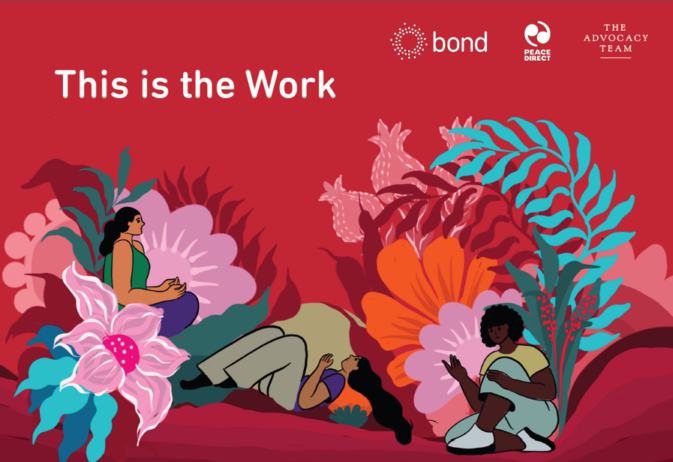Stats on international development: how did the UK spend aid in 2017?
The Department for International Development (DFID) has released the annual Statistics on International Development report, which provides final statistics on how much Official Development Assistance (ODA) the UK provided in 2017.
The report includes UK ODA as a proportion of GNI (the ODA:GNI ratio), which has again met the 0.7% spending target.
It is positive that annual aid figure in 2017 rose by 5.1 %, compared to its total in 2016, but again the share of aid spent by DFID fell in 2017 to just under 72%, down from almost 74% in 2016 and from 89% in 2011. Correspondingly, the share of aid spent by other government departments such as the Foreign Office, and the Home Office, grew to just over 28%. It is important that this trend does not continue in following years and that the amount invested by DFID should increase until government departments meet the same level of accountability, scrutiny and transparency as DFID.
Highlights
The UK met the 0.7% ODA/GNI target in 2017 with a final ratio of 0.70%.
UK aid increased to £14,059m in 2017, up from £13,377m in 2016, an increase of £682m (or 5.1%). However, the £682m increase was less than the £1,120m increase in 2016, which was partly due to the shift to using the new GNI calculation methodology (ESA 2010), which saw GNI figures increase substantially.
Multilateral and bilateral ODA
- The split between multilateral and bilateral ODA remained relatively stable, with bilateral ODA (including specifically-earmarked aid delivered via multilaterals) at 62.6% (£8,803m), and direct multilateral ODA at 37.4% (£5,256m). In 2016 it was 63.8% (£8,534m) and 36.2% (£4,843m) respectively.
- Core contributions to multilaterals grew faster in relative terms at 8.5% (£413m) to £5,256m, with bilateral aid increasing by 3.1% (£269m) to £8,803m.
- The estimated UK share of the EU developmental budget in 2017 was £884m, a decrease of £92m from £976m in 2016, reflecting a reduction in the UK’s overall share of the EU budget in 2017, EU ODA disbursements and exchange rate movements.
How did departments spend ODA?
DFID’s relative share of the aid budget it manages declined to 71.9% (£10,104m), down from 73.8% (£9,871m) from 2016. In absolute terms, this represented an increase of £232m (2.4%).
The relative share of aid that other government departments and cross-departmental funds manage and contribute to ODA grew to 28.1% (£3,955m), up from 26.2% (£3,506m) in 2016. In absolute terms, this represented an increase of £450m (12.8%).
Subscribe to our newsletter
Our weekly email newsletter, Network News, is an indispensable weekly digest of the latest updates on funding, jobs, resources, news and learning opportunities in the international development sector.
Get Network NewsSignificant non-DFID departmental allocations include:
- Business, Energy & Industrial Strategy (BEIS) – 5.4% of total ODA (5.2% in 2016).
- Conflict, Stability and Security Fund (CSSF) – 3.9% of total ODA (4.5% in 2016).
- Foreign & Commonwealth Office (FCO) – 4.5% of total ODA (3.8% in 2016).
- Home Office – 2.4% of total ODA (2.7% in 2016). ODA spent by the Home office includes expenditure on in-donor refugee costs.
- Non-department sources (items not on any departments’ budget) included the IMF Poverty Reduction and Growth Trust (PRGT) (5.2% or £726m), the non-DFID EU attribution (3.2% or £445m), and Gift Aid (1.2%, or £164m).
- The 62% increase in transfers to the IMF PRGT (an additional £280m, from £446m to £726m) accounted for over 40% of the overall increase in UK ODA in 2017.
- DFID also made an investment of £395m in the CDC Group in 2017 (£285m in 2016), which is included within DFID’s total ODA expenditure.
Which countries received bilateral aid?
Of the UK’s total bilateral ODA, around two thirds (67%, or £5.9bn) was allocated to specific countries and regions. The majority of country-specific ODA (£3,961m) was spent by DFID, 60% (£2,367m) of which was spent in Least Developed Countries (LDCs), with country-specific ODA by non-DFID contributors (£922m) going primarily to lower and upper middle income countries (with LDCs receiving 22.8% or £232m).
The top five recipients of UK country-specific bilateral ODA in 2017 were Pakistan (£402m), Nigeria (£327m), Ethiopia (£326m), Syria (£314m) and Somalia (£282m), together accounting for 34% (£1,652m) of total country-specific bilateral ODA (£4,883m). Somalia and Yemen received the largest increases in bilateral ODA, with aid to Somalia rising from £152m in 2016 to £282m in 2017, and aid to Yemen increasing from £127m to £205m, due mainly to increases in humanitarian assistance (total UK bilateral humanitarian assistance to Somalia and Yemen in 2017 was £200m and £189m respectively).
Other allocation of UK bilateral aid
- 16.5% of total bilateral ODA (£1,454m) was spent on humanitarian assistance, an increase of 13.2% (£170m) relative to 2016 (£1,284m).
Spending in-country
- Expenditure on in-donor refugee costs fell slightly to £378m or 4.3% of bilateral ODA in 2017 (from £410m or 4.8% in 2016, a reduction of 7.8%), having increased by over 1,400% between 2012 (£28m) and 2016, primarily reflecting increased counting of existing in-donor refugee costs as ODA.
Category
News & ViewsThemes
UK aid



